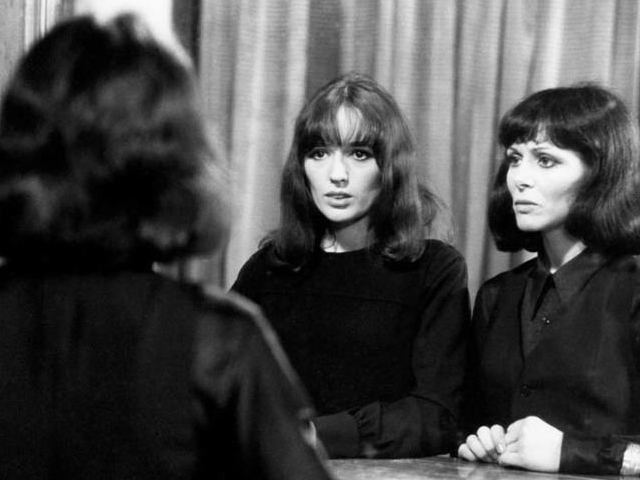
Elizabeth Alione is sinking into a deep melancholy when she drags down the corridors, the park and the dining room of a hotel. Originally intended as an English-language film under the title The Chaise-Longue, to be directed by Joseph Losey. It was an original screenplay by Duras by which Losey claimed to have been enthralled; however, he and Duras fell out over casting and the project was shelved. Duras eventually made the film herself, in French and after some rewriting. Losey called the final movie “a film I hate as much as I loved the original screenplay”.
“Destroy, She Said, her fourteenth novel and second feature, both released in 1969, emerged for her from ‘the idea of a book… that could be either read or acted or filmed or... simply thrown away.’ The conceptual pivot of both versions, set in a rural hotel that’s something more like a sanitarium, is a phony card game used as a vehicle for interrogation and entrapment of one of the players; as always with Duras, the rules of the game are never quite clear at the outset. But echoing the final scene of Blow-Up (1966), it is the periodic sounds of a tennis match – heard but not seen, and commented on throughout the novel/film – which lay the groundwork for the plays with image and sound that recur through the films of hers that followed.
‘I don’t think the image can ever replace what I called ‘the indefinite proliferation’ of the word,’ she declared to Jean-Luc Godard in one of their three conversations on the twined subjects of son et image (spanning 1979–1987 and subsequently collected into the volume Duras/Godard Dialogues). But just as the New Wave icon’s work would continue to grapple with such questions – his disorienting, staccato bursts of image/sound would intensify in the ’80s, beginning with Every Man For Himself, in which Duras can be heard but not seen – Duras’s own oeuvre, through rather different means, sought to challenge preconceptions and overturn cinematic orthodoxies. Destroy, she said – and so she did, continually questioning received filmmaking methods, and through a kind of discovery by dissolution, conceiving of how things might be otherwise.”
Lawrence Garcia1
“Why are her films so difficult, so boring, yet so important and so rewarding? I first came to Duras as filmmaker from having read Moderato Cantabile and having admired the written texts for Hiroshima mon amour (1959) and Une aussi longue absence (1961). But the repetitive poetry of her novels and of those two films was missing in Destroy She Said. I ‘taught’ the film to an undergraduate class, and those who hadn’t fallen asleep reported that it was the most boring film they had ever watched. At the time, I assumed the blame and thought that I would need to do a couple more ‘preparatory’ lectures before I taught the film again. Having taught her films for five more years, I now see that they are a learning experience through confrontation, not through pleasure and identification. Duras is a committed artist who disdains works of art and who has minimal confidence in the impact of an art work upon an audience: thus, her formalism. and for someone who is a novelist with a poet’s ear for music, she is incredibly silent. Unlike Hiroshima mon amour and Une aussi longue absence, Duras’ own films contain no poetic camera movements nor do they fill up the static camera shots with interesting or beautiful spoken texts. Her films have forced me to confront film as a potential non-seeing process, one in which split-screen is replaced by split sound tracks. And as her visual sense becomes more assured, more pro forma or perfunctory, Duras’s experiments in sound become more audacious, more aubtle and, yes, more formal. Her experiments in language have precisely to do with separating the visual track from the sound track and with breaking down the sound track into autonomous parts of music or spoken text – as audible statement, as memory recall, or simply as the whisperings of longing and desire. I know now that I cannot expect my students to derive immediate pleasure from a Duras film. I also know that from such a confrontation my students have been more readily receptive tot the usages of sound in the films of Resnais, Godard or Robert Altman. Accordingly, I think Duras’ films deserve a closer look, one by one.”
William F. van Wert2
- 1Lawrence Garcia, “Difference and Repetition: The Filmmaking of Marguerite Duras,” MUBI Notebook, 8 September 2020.
- 2William F. van Wert, “The Cinema of Marguerite Duras: Sound and Voice in a Closed Room,” Film Quarterly, Autumn 1979.